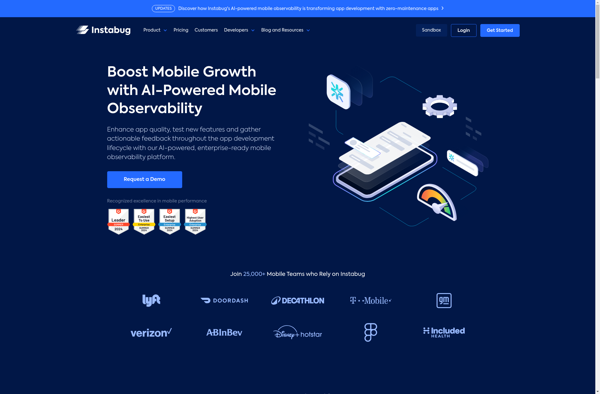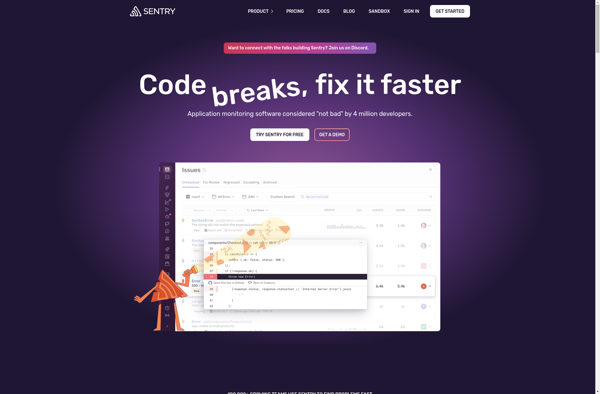Description: Instabug is a bug reporting and in-app feedback platform for mobile apps. It allows beta testers and users to report bugs and send feedback directly from within the app, including screenshots, device details, network logs, and repro steps. Instabug automatically categorizes reports and lets developers annotate, reply, and track status.
Type: Open Source Test Automation Framework
Founded: 2011
Primary Use: Mobile app testing automation
Supported Platforms: iOS, Android, Windows
Description: Sentry is an open-source error monitoring system that helps developers monitor and fix crashes in real time. It provides full stacktraces and context on bugs or errors in web apps, mobile apps, games, and APIs.
Type: Cloud-based Test Automation Platform
Founded: 2015
Primary Use: Web, mobile, and API testing
Supported Platforms: Web, iOS, Android, API

